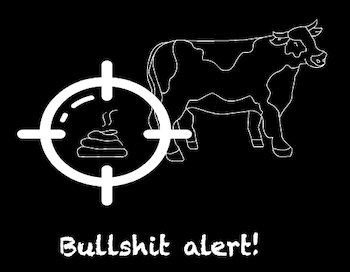Cash savings rates have been dreadful over the past few years, with many accounts offering rates as low as 0.01% AER. (That’s equivalent to 1p per year for every £100 saved. Don’t spend it all at once!)
This low-interest environment has punished many with a frugal mindset, but most obviously those who’ve kept a large proportion of their hard-earned wealth in a cash savings account.
However, while accounts boasting pitiful rates still abound, the savings market is – finally – starting to turn, thanks to the Bank of England raising its base rate in the face of high inflation.
The Bank Rate has already risen three times this year. It currently stands at 1%. And it’s expected to go higher, which should lead to further competition among the banks for savers.
So where should you stash your cash today? Let’s look at the different types of accounts out there, and at which accounts pay the highest rates of interest.
Easy access savings
Easy access is the most popular type of savings account. These accounts pay you interest and give you instant access to your cash. This means you can add or withdraw money as often as you like.
Easy access is typically the best type of account to go for if you know you’ll need access to your cash within a year or so.
They’re also a good option if, like me, you just don’t want to lock away your cash.
Do note that interest rates on easy access accounts are typically variable, meaning they can change in future. However some easy access accounts will pay a temporary fixed bonus for a year.
Picking the ‘best’ easy access account is tricky. That’s because there are a number of accounts out there that all work slightly differently from one another. What’s more, the highest rates are only available if you’re willing to open a new bank account.
Here’s the lowdown.
- Highest easy access rates (but you’ll need to open a current account). If you’re willing to open a bank account, then Virgin Money currently offers the highest easy access savings rate. To get it, you must open its ‘M’ Plus current account and then manually open its linked savings account. Virgin’s savings account offers 1.56% AER variable interest, payable up to £25,000.
- If Virgin isn’t for you, then app-only Chase Bank pays a slightly lower 1.5% AER variable via its linked savings account. You can save up to £250,000 in this account, though you should probably always limit yourself to the £85,000 Financial Services Compensation Scheme limit.
- Highest straightforward easy access rate. If you’d rather avoid having to open a new bank account or deal with temporary bonus rates, Ford Money pays the highest, straightforward easy access rate available. Its Flexible Saver pays 1.3% AER variable interest. You can save as little as £1.
Regular savings
Regular savings accounts enable you to put money into them on a monthly basis. Usually the headline rates on these accounts trump easy access deals, but there are limits as to how much you can save into them each month. Those limits are often quite stingy too!
Some accounts only allow you to hold them for a year or so. Others restrict your ability to withdraw cash. And the highest-paying accounts are often tied to you also running a specific current account. However there are a few decent options available open to all.
Here are a few of the top accounts:
- Highest regular savings rate for current account customers. If you have a First Direct current account then you’ll have access to its table-topping regular savings account. It pays 3.5% AER fixed interest for one year and you can put in up to £300 per month. However, if you close the account within a year, the interest rate drops to just 0.1%.
- Don’t have a First Direct account? NatWest (3.3%), Santander (2.5%) and Nationwide (2.5%) also offer competitive regular savings accounts for their current account customers.
- Highest open-to-all account. Coventry Building Society offers a competitive regular savings account paying 1.65% AER variable interest for one year. Plus, you don’t have to be a Coventry customer to open it. You can save up to £500 per month, though if you want to close the account early, a 30-day interest penalty applies.
Notice savings
Notice savings accounts are just like easy access accounts, but with an added rule that you must give your provider notice before making a withdrawal.
Generally, the longer the notice period, the higher the interest rate.
I like notice accounts. They provide a way of beating easy access rates without the requirement to lock away cash for a long period of time.
Here’s my pick of the top accounts:
- Highest 120-day notice account. If you’re happy to give roughly four months notice before withdrawing cash, DF Capital’s 120-day notice account pays 1.7% AER variable interest.
- Highest 90-day notice account. If you’d prefer a shorter notice period, then DF Capital also has a 90-day notice account paying a slightly lower 1.6% AER variable.
Both accounts enable you to save from £1,000.
Fixed savings
To get yourself the highest interest rate on your cash, fixed savings accounts are the way to go.
With these accounts you must lock away cash for a set period of time. In return, you’ll earn a higher interest rate than the easy access alternatives.
Generally, the longer the fixed period, the higher the rate of interest.
However while I think fixed savings accounts can work for some, I tend to to steer clear. Rightly or wrongly, I value being able to access my savings whenever I want, so I prefer easy access offerings.
In contrast, those who most value a guaranteed interest rate will find what they need here.
With fixed rate accounts it’s really important to appreciate the risks of opting for an account with a long fixed period. If savings rates rise in future, you won’t be able to benefit until your term expires.
Here are the longest one- and thee-year fixed accounts available right now.
- Highest one-year fixed savings account. Cynergy Bank offers a one-year fixed savings account paying 2.57% AER fixed. You must have at least £10,000 to open it.
- If you’ve less than £10,000 to save, then Investec pays 2.4% AER fixed for one year. You can save from £5,000.
- Highest three-year fixed account. Cynergy Bank pays the highest three-year fixed account at 2.9% AER. You need £10,000 to open it.
Is opening a savings account a good idea with high inflation?
It’s hard to ignore inflation right now. Latest Government figures tell us that the Consumer Price Index stands at 9%. Many expect it to go higher this year.
While there’s no sure way to hedge against inflation, we know for sure that none of the savings accounts above are paying anything close to it.
However having some of your wealth in cash is not necessarily a bad idea, if only for diversification. Cash is among the very few assets that’s delivered a positive nominal return in 2022 so far.
Remember, even if your cash is set to earn significantly less than inflation, it’s still worth bagging yourself the highest interest rate possible.
How much of your portfolio do you currently keep in cash? Have you moved your money recently? I’d love to hear in the comments below.







